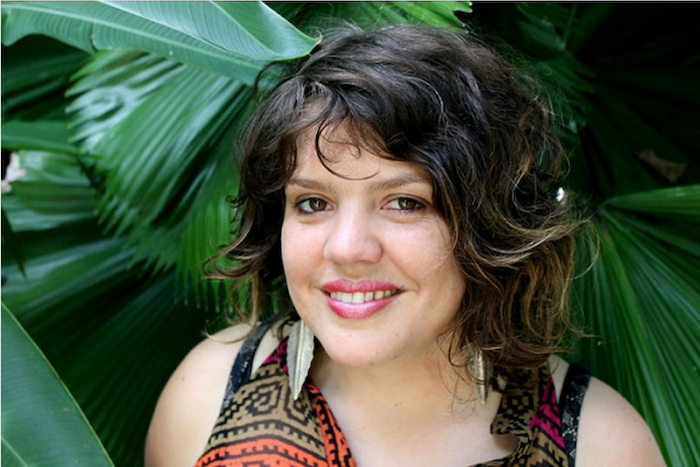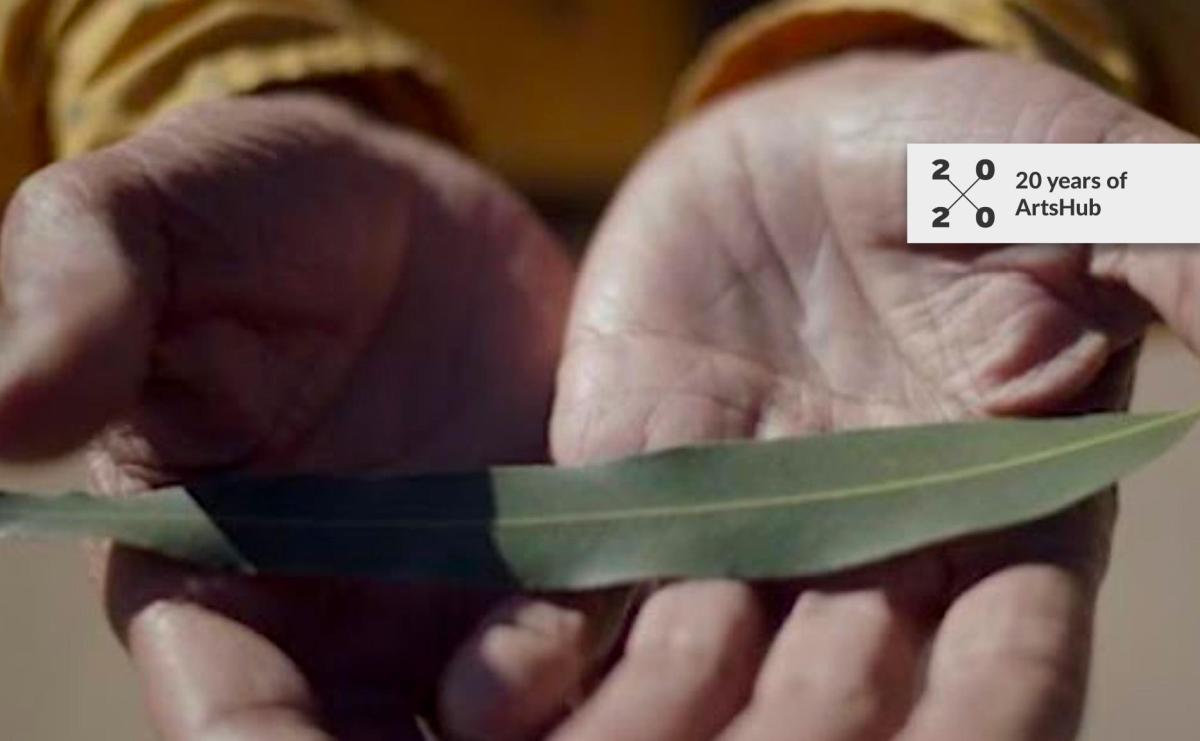First published in 2019, Genevieve Grieve’s keynote at the inaugural Fair Play Symposium asks what it means to truly put First Nations first.
This article is the latest in our 20×20 series, which in ArtsHub’s 20th anniversary year looks back at the cultural milestones and trending topics that have shaped the arts over two decades. Today, we shine a light on First Nations conversations and policy-making in honour of NAIDOC Week.
* * *
‘I am here as a First Nations woman, a Worimi from NSW, to speak from my perspective about diversity and fair play in the creative industries,’ said Genevieve Grieves, as she addressed the audience at the inaugural Fair Play Symposium (2019) held at the Wheeler Centre in Melbourne.
‘I’ve titled this keynote First People First because it’s a statement we hear more and more of in the arts and culture section in Australia, and I think it’s one that we need to unpack,’ she said.
Presented by Diversity Arts Australia, the symposium was conceived to tackle the subjects of equity and inclusion for First Nations People, people living with a disability, and people from culturally and linguistically diverse backgrounds in the creative industries.
Grieves said: ‘For many people, “First Peoples first” has come to stand for action: engaging elders to welcome, programming more Indigenous art, hiring an Indigenous actor for a mainstream role, or ensuring our narratives and shared history are included.
‘All of these actions are positive and make a real contribution to change, however part of this movement is morally imperative, not for surface or tokenistic action, but for a deep reckoning of the injustice that characterises our nation.
‘It is a collective endeavour, but it is also an individual journey to acknowledge that this sovereign land was never ceded.’
Read: Protocol updates for First Nations Cultural and Intellectual Property (2020)
Grieves, who is an artist, curator and the Head of First People Department, Melbourne Museum, continued: ‘How do we remember and acknowledge the violence that occurred in this country? If first peoples were really put first in Australia, if the unfinished business of the nation was finally reckoned with, it would transform our society into a space that is almost hard to envision in the present day.’
‘It would be a place where our voices, our knowledge and our cultures would be valued and heard, and our country could be healed.
‘It’s not just about people, it’s about land. There is hope in the statement: first people first.’
– Genevieve Grieves
‘It’s that real change is possible; that future generations will not face the same oppressions that has gone on before them – it is a change that I hope you all embrace.’
Grieves addressed what it means when we say ‘First Peoples first’ by exploring the traumatic history that is so often over-looked. ‘So our experience – First Peoples’ experience – since 1770 has been framed by colonisation. Colonisation is a structure, it’s not an event – it didn’t happen in 1770 and end there, its impacts don’t just exist in the past, they continue into the present. We remain a colonised country. And the process of colonisation, to put it simply, is one of destruction.’
Grieves explained of ‘the great Australian silence’.
[It is] a deliberate attempt to forget that this country was occupied at the time of invasion, and that violence was enacted on people in order to occupy it. In the 1970s, the revisionist historians worked hard to bring these narratives to light, supporting Indigenous people from across the country who demanded that their voices be heard, and the truth be told.’
Grieves spoke of the Uluru Statement from the Heart and how those demands had still not been met, and the continual struggle First Peoples face in our contemporary times. She said the perpetration of a white-washed narrative meas that a majority of Australian society don’t know the truth of the past.
Read: Dreaming of a better future for First Nations arts – Alison Croggon (2019)
‘Since the 1970s many narratives have come forward of the Stolen Generations, frontier violence, domestic servitude, and stolen wages. They have been rejected and continue to be rejected by many – and that’s just not those who are in power, who want to create a positive white-washed identity free from the stains of the past. But also average people.
‘We cannot underestimate the strength of denialism in this county. It operates at a meta-level in our institutions and in our leadership, but also on our citizens who are taught to reject the truths in our history…’

Genevieve Grieves. Photo via The Wheeler Centre.
‘Another strong belief aligned with this thinking is that Australia is a white country,’ continued Grieves. ‘And you could be forgiven for thinking that it is because when we look at our power structures, the federal government, the high court, university chancellors, the whiteness is blinding.’
Grieves explained the diversity of First Nations culture with 250 nations thriving at the time of invasion, but which are now placed under the terms of Aboriginal or Indigenous and ‘presenting a homogeneity that does not reflect who we are.’
She continued: ‘our need to reflect this diversity is simply because it is the reality of who we are.’
Power structures need to be examined; Grieves emphasised the need for the creative industries to be the space in which all peoples could feel represented. ‘We need to create representations that communicates who we are as people, as communities, as a country. And we need to create a sense of our own identity, individually and collectively.
‘It is our responsibilities to tell our stories; share our knowledge, imagine our future, provide spaces to connect – to laugh, to cry, to rage and to change.’
‘Our representation is also about power, not just the power to create, but to have a stage to have our story heard – it’s also the power of decision making.’
Grieves posed to the audience: ‘Who is at the table? Who is on the board? Where does real power lie and who is awarding it?
‘I want to take this a step further and argue that it’s not enough to incorporate diverse people in the current decision-making structures. These structures themselves need to be examined,’ she said. ‘What are the cultural foundations of these structures? And, how do they need to be re-imagined to apply systemic change?
‘These are not easy questions to answer … There are no easy solutions and quick fixes in this space of restoration and justice, real change requires critical conversations and a sense of uncomfortability,’ Grieves concluded.
This article is based on Genevieve Grieves’ keynote speech First Peoples First presented at the Fair Play Symposium in Melbourne, VIC on 26 February 2019.
More Reading this NAIDOC Week:
Budgeting for sorry business – Richard Watts (2017)
Tips on how to buy Indigenous art ethically – Gina Fairley (2015)
How arts organisations can help our First Nations young people – Brooke Boland (2017)





